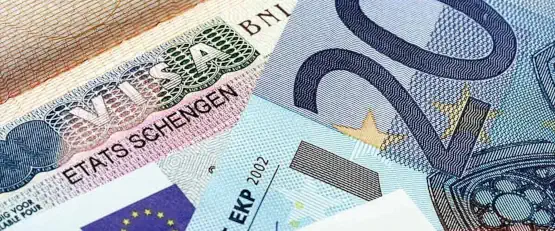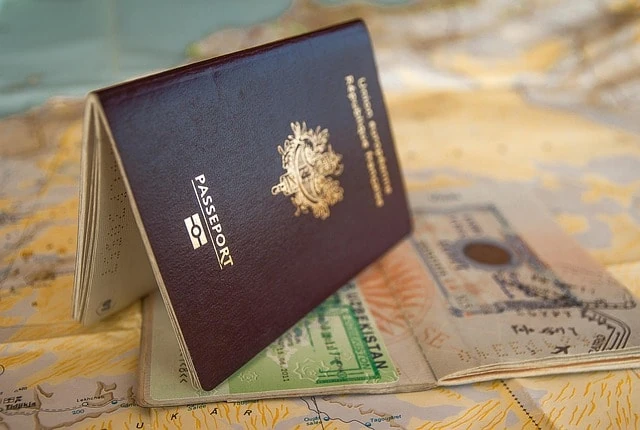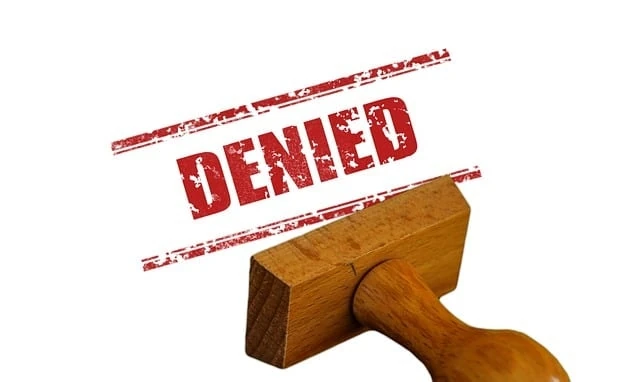How to Get a Schengen Visa in 2025: Complete Guide

Imagine stepping off a plane in Paris, taking a train to Amsterdam, then driving to Berlin — all without showing your passport at internal borders. This seamless travel experience across the European Union is the magic of the Schengen Area, one of the world’s most amazing achievements in freedom of movement. But for travellers from many third countries, the key to unlocking this borderless European adventure is the Schengen visa.
Planning to visit Europe in 2025? The Schengen Area is changing with new border controls and visa requirements on the horizon. Whether you’re dreaming of sipping espresso in an Italian piazza, exploring ancient ruins in Greece, or shopping along the Champs-Élysées in France, you need to understand these changes to travel. Don’t forget to start your visa preparation early — as member states are introducing new digital systems, requirements and processing times are changing.
This complete guide, updated with the latest information from the European Commission and border authorities, will take you through everything you need to know about getting your Schengen visa, from understanding if you need one to navigating entry and exit requirements within the European Union. We’ll cover the common rules that apply to all 27 Schengen countries and help you avoid the pitfalls that will get you rejected.
2025 Updates

The Schengen landscape is changing in 2025 and staying informed about these changes could mean the difference between a smooth application process and complications. As the European countries that signed up for the Schengen Borders Code modernize their systems, travellers need to adapt to the new requirements and procedures.
Think of it this way: showing up to apply for a Schengen visa without knowing about the new digital systems would be like turning up at the airport without checking if your flight is still scheduled—you’re setting yourself up for frustration and potential problems. The European Parliament and European Commission have approved changes to border controls and visa applications that will affect everyone from business travellers to tourists wanting to travel freely between participating countries.
Don’t forget to check if your destination country is introducing the new EU VAP system before you apply. Some member states are early adopters, others are keeping traditional application methods until 2025. This patchwork implementation means research is key—what worked for your friend’s application to visit France might not apply to your trip to Spain, Sweden, and Switzerland. These changes will affect your Schengen visa in 2025:
The most significant changes coming to Schengen visas are the digitalization through the EU Visa Application Platform (EU VAP) and the updates to the Schengen Borders Code. While the full digitalization won’t be complete until 2027, several changes are already being rolled out across all Schengen countries:
-
Digital visa: The new Schengen visa will be fully digital by 2027, but 2025 marks the beginning of this transition with member states testing digital systems
-
Strengthened external borders: New systems for border controls at the external borders of the Schengen Area
-
Streamlined verification processes: Updated common rules for faster verification of financial documents, travel insurance and accommodation proof
-
More biometric data collection points: More locations to submit fingerprints and photos for the Schengen Information System
-
Multi-year visas: New multi-year visa options for travellers from third countries with positive visa history
-
Increased insurance requirements: Minimum coverage increased to €50,000 (up from €30,000)
-
Internal security: New measures to combat cross-border crime while allowing people to travel freely between participating countries
Note: If you hold a passport from the US, UK, or other non-EU countries with visa exemption status, you won’t need a Schengen visa for stays under 90 days within a 180-day period. However, from late 2025, these travellers will need to register with the ETIAS system (European Travel Information and Authorization System) before travelling to enter the Schengen Area as part of the enhanced external border management.
Who needs a Schengen Visa?

Navigating the complexities of international travel can be overwhelming, especially with the updates to the Schengen Borders Code and entry-exit requirements. We recently heard from a Brazilian traveller who planned a month-long architecture tour across Italy, Latvia, Liechtenstein, and Lithuania, only to discover at the airport that their visa was invalid for the duration of her stay. Their story is unfortunately common among travellers who are not familiar with the 90-day rule within a 180-day period. The Schengen Area isn’t just a geographical concept—it’s a managed zone with external borders controlled by border checks and sophisticated information systems to control who can enter and exit. Law enforcement agencies across member states share data through the Schengen Information System to monitor compliance and combat cross-border crime while allowing legitimate travellers to move freely between participating countries.
Don’t forget to check your nationality against the official visa requirements list well in advance. Many travellers make the costly assumption that the rules that applied to their previous European trip still stand, only to face disappointment at external borders. Remember that requirements can change based on diplomatic relations between your home country and the European Union.
The Schengen rules established by the European Commission require third-country nationals from certain countries to obtain the appropriate visa before they can enter the Schengen Area. You’ll need to apply for a Schengen visa if:
-
You’re from a non-visa-exempt country (check the official list here)
-
Planning to stay in the Schengen Area for up to 90 days within a 180-day period
-
Travelling for tourism, business, or family visits across EU member states
-
Transit through air borders or sea borders of Schengen countries (for certain nationalities)
Types of Schengen Visas
The beauty of the Schengen visa system lies in its flexibility, allowing travellers to choose the visa type that matches their European journey. Whether you’re attending a business conference in Frankfurt, studying art history in Florence, or simply exploring the stunning coastlines of Croatia, Czechia, Denmark, and Estonia, there’s a specific visa category for your needs.
We've heard of other stories where an individual travelling for a family wedding, applied for a tourist visa, not realizing that family events qualify for a different visa type with different documentation requirements. His application was delayed because French authorities requested additional proof of his family relationship—a situation that could have been avoided if he had chosen the correct visa category.
Don’t forget to consider all planned activities before choosing your visa type. Many travellers make the mistake of choosing a tourist visa by default when their itinerary includes activities like attending conferences, short courses, or paid performances that require different visa categories. Border guards at the external borders are trained to detect mismatches between stated travel purposes and actual activities, which can lead to serious complications including entry refusal. The Schengen acquis has several visa types to allow foreigners to travel freely within the Schengen Area based on their travel purpose:
-
Tourist Visa (Type C): For holidays and sightseeing across multiple Schengen countries like France, Germany, Greece, Hungary and other participating countries
-
Business Visa: For professional meetings and conferences in EU countries
-
Visit Visa: For visiting family or friends in member states
-
Transit Visa: For passing through Schengen airports and internal borders
-
Medical Visa: For medical treatment in any Schengen Area countries
-
Study Visa: For short courses or seminars within the European Union
-
Cultural and Sports Events Visa: For participating in cultural or sporting events across Schengen countries
-
Official Visit Visa: For government-related visits involving foreign affairs
Required Documents for 2025
The document-gathering phase is often the most daunting part of applying for a Schengen visa. I recently worked with an Indian family planning their dream European trip across Hungary, Iceland, Italy, and Latvia who described their dining room table disappearing under piles of paperwork, bank statements, and travel confirmations for weeks. While it may seem excessive, each document serves a purpose in meeting the common rules established by the Schengen Convention.
Think of your documentation package as telling a story to immigration officials who have to make quick decisions about your application. This story needs to communicate who you are, why you’re travelling, how you’ll support yourself financially, where you’ll stay, and—crucially—why you’ll definitely return to your home country when your visit ends. Missing or inconsistent documents create gaps in this narrative that raise flags for border guards and consular officials.
Don’t forget to create a detailed checklist tailored to your specific situation and destination country. Requirements can vary slightly between embassies of Austria, Belgium, Bulgaria, and other member states even though they’re all implementing the same Schengen Borders Code. I’ve seen many travellers need to reschedule appointments after realizing they’re missing essential documents like employment verification or proper travel insurance coverage meeting the strict EU requirements for personal data protection and emergency medical care.
The common rules established by member states require you to prepare these essential documents for your application to enter the Schengen Area:
-
Valid passport: Must be valid for at least 3 months beyond your planned return date and issued within the last 10 years* Filled and signed visa application form: Available online through EU VAP (for participating countries) or through traditional channels
-
Recent photo: 3.5 x 4.5 cm with light background (digital version for EU VAP applications)
-
Travel insurance: Min. €50,000 for medical emergencies, hospital treatment and repatriation
-
Return flight ticket: Showing entry and exit dates for border checks at external borders
-
Hotel booking or accommodation proof: For your entire stay across Schengen countries like Austria, Belgium, Bulgaria, Croatia, Czechia, Denmark, Estonia, Finland, France, Germany, Greece, Hungary, Iceland, Italy, Latvia, Liechtenstein, Lithuania, Luxembourg, Malta, the Netherlands, Norway, Poland, Portugal, Romania, Slovakia, Slovenia, Spain, Sweden, Switzerland
-
Bank statement: 3-6 months showing sufficient funds (approximately €100 per day of stay)
-
Employment certificate: From the employer stating position, salary, and approved leave
-
Itinerary: Day-by-day plan of your visit showing how you’ll travel freely between participating countries
-
Cover letter: Explaining the purpose of the visit and itinerary details
-
Integration proof: Evidence of ties to your home country for personal data protection and security purposes
How to apply
The Schengen visa application process is like managing a complex project with many moving parts. Each step builds upon the previous one and timing is crucial. The process was designed by the European Parliament and European Commission to be thorough rather than convenient. Remember, consulates process hundreds or thousands of applications daily, with border security and internal security as top priorities. What seems like bureaucratic inefficiency to applicants is often careful scrutiny to prevent illegal immigration and combat cross-border crime while facilitating legitimate travel. Don’t forget to start your application at least 8-12 weeks before your planned travel date, especially during peak seasons when consulates are busy. I’ve seen travellers who booked non-refundable accommodations in Finland, France, Germany, and Greece only to have visa processing delays force them to cancel their carefully planned itineraries. The earlier you begin, the more buffer you have for unexpected complications.
Follow these steps established by the European Parliament and the European Commission to apply for your Schengen visa:
-
Choose Your Visa Type: Based on your travel purpose within the European Union
-
Find the Correct Embassy: Apply at the embassy of your main destination among the Schengen countries (where you’ll spend the most days)
-
Check EU VAP Availability: Some EU member states will start using the digital platform in 2025
-
Gather Documents: Collect all required paperwork according to embassy requirements and Schengen rules
-
Book Appointment: Through the official visa application center (VAC) or EU VAP
-
Pay Application Fee: Using the approved payment methods by law enforcement agencies
-
Submit Application: In person for systematic border checks and biometric data collection for the Schengen Information System (if not already in the system)
-
Track Application: Through the online portal of the member states
-
Collect Passport/Digital Notification: Once approved, collect a physical visa or receive a digital confirmation to travel freely between participating countries
Processing Time and Fees

Visa processing is governed by the official timelines of the Schengen Borders Code, not your personal preferences. Even the most compelling personal circumstances rarely accelerate the process beyond the standard timeframes. Consular staff processing applications from third countries must follow strict protocols for document verification, background checks, and consultation with border guards or other member states when necessary. Don’t forget to include these processing times and fees in your overall travel budget and timeline. I’ve seen too many travellers book non-refundable flights before getting visa approval only to face cancellation penalties when processing takes longer than expected. The European Union’s common rules for visa issuance prioritize thoroughness over speed and no amount of follow-up will typically expedite the decision.
Plan accordingly:
-
Standard processing: 15 calendar days
-
Extended processing: Up to 30 days (common during peak season)
-
Exceptional circumstances: Up to 60 days (rare cases requiring additional verification)
-
Fee: €85 for adults (€45 for children 6-12, free for children under 6)
-
Service fees: Additional charges may apply when using Visa Application Centers
-
Premium processing: Available in some locations for an additional fee (approximately €50-100)
EU VAP Implementation Timeline
The digitalization of the Schengen visa system is one of the biggest changes in European border management since the Schengen Convention itself. This isn’t happening overnight – it’s a staged transition designed to maintain security while improving efficiency.
For travellers, this means different experiences depending on when and where you apply. A business traveller applying for a visa to attend conferences in Lithuania, Luxembourg, Malta, and the Netherlands in early 2025 might still go through a mainly paper-based process, while someone applying later in the year to visit Norway, Poland, Portugal, and Romania might already enjoy the digital application system.
Don’t forget to check the implementation status for your destination country before you start your application. I’ve worked with several travellers who wasted time preparing physical documents only to find out their destination country had already transitioned to digital submissions and they had to redo all their application materials. The European Commission website and embassy websites usually provide information about the status of each country in the EU VAP transition.
The EU Visa Application Platform is part of the Schengen Convention modernization and will roll out in several phases according to the European Commission and European Parliament decisions:## Phases
-
Phase 1 (2025): Initial rollout in select Schengen countries and consulates, focusing on external border management
-
Phase 2 (2026): Expansion to most EU member states and consulates worldwide with internal security features
-
Phase 3 (2027): Full implementation of Schengen Borders Code updates and mandatory use of digital systems
-
Full transition by end of 2027: All Schengen visa applications will be processed digitally across all participating countries, allowing foreigners to travel freely within the Schengen Area with improved personal data protection
Tips for Success
The difference between approval and rejection often comes down to preparation and attention to detail. By breaking down the application into each requirement and anticipating the questions of the consular staff, a daunting task can be turned into a manageable one and minimize stress.
Successful applicants approach the visa process by preparing for an important presentation or interview. They know that border controls and the Schengen Information System are designed to facilitate legitimate travel while preventing unauthorized entry and they provide clear and convincing evidence of their travel plans and home-country connections.
Don’t forget to review your entire application package from the perspective of a skeptical immigration officer before submission. I’ve guided hundreds of travellers through this process and always find that taking a step back to review your application can reveal inconsistencies or weaknesses you might otherwise miss. Ask yourself: “If I didn’t know myself, would this application convince me to approve a visa?” If there’s any hesitation in your answer, strengthen those areas before submission.
Boost your chances of approval with these strategies:
-
Apply Early: Start process 3-6 months before travel (especially high season)
-
Check Country Requirements: Each Schengen member state may have different document requirements
-
Organize Documents: Use tabs or folders as per embassy instructions
-
Financial Documentation: Ensure bank statements show stable income and sufficient funds
-
Travel Insurance: Choose policies that state “Schengen visa requirements”
-
Detailed Itinerary: Create day-by-day plans matching hotel bookings
-
Consistency is Key: Ensure all documents show the same information (dates, names, etc.)
-
Professional Flight and Hotel Bookings: Use verifiable reservation services accepted by the embassies
Common Reasons for Rejection

Imagine you’ve spent weeks preparing your Schengen visa application, booked flights, and reserved hotels across beautiful European countries like France, Germany, and Spain and you’re dreaming of strolling through charming streets and enjoying local cuisine. Then the devastating news – visa rejected. It happens to thousands of travellers every year and can ruin your entire European adventure.
Visa rejection isn’t just disappointing – it’s costly in terms of time, money, and emotional investment. Application fees aren’t refundable, pre-booked accommodations might be non-refundable, and rescheduling your dream trip means starting the whole process all over again. Not to mention explaining to friends and family why your exciting European journey isn’t happening after all.
The good news? Most rejections are avoidable if you know the common mistakes. Border guards and immigration officials at the external borders of the Schengen Area follow strict guidelines from the European Commission and the Schengen Borders Code. They’re looking for specific things and knowing these requirements can make all the difference between approval and rejection.
Don’t forget to triple-check these critical areas that often trip up applicants from third countries wanting to enter the Schengen Area:
-
Incomplete documentation: Missing required papers or evidence
-
Insufficient funds: Not enough financial proof for stay duration
-
Unclear travel purpose: Vague or suspicious travel intentions
-
Invalid travel insurance: Coverage below requirements or non-compliant policy
-
Inconsistent information: Conflicting dates or details across documents
-
Poor application form completion: Errors, blank fields, or incorrect information
-
Weak ties to home country: Not enough proof you’ll return after your visit
-
Previous overstay or visa violations: Negative travel history in Schengen or other countries
Special Considerations 2025
The Schengen visa rules are changing in response to geopolitical events, security concerns, and technological advancements. These changes can sometimes catch even experienced travellers by surprise. Knowing these special considerations isn’t just helpful – it’s necessary for successful travel planning in 2025. The decisions made by member states regarding temporary border controls can affect travel times between countries like Slovakia, Slovenia, Spain, and Sweden which normally allow foreigners to travel freely between participating countries. Similarly, new policies on internal security can impact processing times and scrutiny levels for certain traveller profiles.
Don’t forget to monitor international news and official EU communications in the months leading up to your trip. I’ve seen cases where policy changes announced just weeks before a planned journey significantly altered entry requirements or processing procedures. The European Commission website and the official portals for the Schengen Information System provide the most up-to-date information on evolving policies that might affect your travel experience.
Be aware of these additional factors affecting Schengen visa applications due to changes in the Schengen Borders Code and decisions by member states:
-
ETIAS Implementation: Affects non-EU nationals from visa-exempt countries with new pre-authorization requirements for entry and exit
-
Temporary Border Controls: Some Schengen countries like France, Germany, and other EU countries may implement temporary internal border controls due to serious threat to internal security
-
Country-Specific Quotas: Some member states have introduced annual visa caps for third-country nationals
-
Sustainability Requirements: New questions about carbon offsetting for flights in applications for entry to European countries that agreed to climate initiatives
-
Health Protocols: Changing requirements by border guards related to vaccination or health documentation
-
Regional Processing Centers: Some countries consolidate visa processing to regional hubs to combat cross-border crime and improve efficiency
-
Biometric Reuse: Previous applicants may skip biometric collection if data is less than 5 years old in the Schengen Information System
-
Extended Stay Options: New provisions for stays beyond the standard 90 days in a 180-day period for specific circumstances
Conclusion
The journey to getting a Schengen visa can seem overwhelming at first but it’s ultimately a manageable process if you’re prepared and calm. I’ve worked with countless travellers – from first-time tourists excited about visiting Austria, Belgium, Bulgaria, and Croatia to seasoned business travellers making regular trips to Czechia, Denmark, Estonia, and Finland. Almost always, those who approach the process with organization, attention to detail, and patience get their visas. Remember behind the bureaucracy is a system that balances two competing priorities: facilitating legitimate travel and tourism while securing the external and internal borders of the Schengen Area. The European Parliament and European Commission are continually refining these procedures to serve both objectives, with digitalization of the application process being the latest development.
Don’t forget a Schengen visa is more than a travel document – it’s your key to one of the world’s most remarkable experiments in open borders and freedom of movement. Once approved you’ll be able to cross internal borders between France, Germany, Greece, and Hungary without additional checks, and experience multiple European cultures and landscapes in a single trip in ways that would have been unimaginable just a few generations ago.
While the Schengen visa process is getting more streamlined with digitalization across the European Union, preparation is still key. Follow this guide, understand the Schengen rules, and start your application well in advance to ensure a smooth process for entering the Schengen Area.
Remember entry-exit requirements and procedures may vary by country and individual circumstances across the 27 Schengen countries. The Schengen Borders Code is updated by the European Commission to balance freedom of movement with border controls and internal security. Always check with your local consulate or embassy of the relevant EU member states or other Schengen countries before your planned travel.
Need Help With Your Travel Documents?
Getting the right travel documents for your visa application can be stressful. Our services can help:
-
Flight Reservation for Visa: A verifiable flight itinerary without purchasing the actual ticket
-
Hotel Booking for Visa: Hotel reservations that meet embassy requirements
Don’t risk visa rejection due to incomplete documents.


